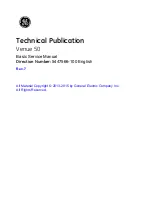
15
General information
Dried or affixed surgical residues can make cleaning more difficult or inef-
fective and lead to corrosion. Therefore the time interval between appli-
cation and processing should not exceed 6 h; also, neither fixating pre-
cleaning temperatures >45 °C nor fixating disinfecting agents (active
ingredient: aldehydes/alcohols) should be used.
Excessive measures of neutralizing agents or basic cleaners may result in
a chemical attack and/or to fading and the laser marking becoming
unreadable visually or by machine for stainless steel.
Residues containing chlorine or chlorides e.g. in surgical residues, medi-
cines, saline solutions and in the service water used for cleaning, disinfec-
tion and sterilization will cause corrosion damage (pitting, stress corro-
sion) and result in the destruction of stainless steel products. These must
be removed by rinsing thoroughly with demineralized water and then dry-
ing.
Additional drying, if necessary.
Only process chemicals that have been tested and approved (e.g. VAH or
FDA approval or CE mark) and which are compatible with the product’s
materials according to the chemical manufacturers’ recommendations
may be used for processing the product. All the chemical manufacturer's
application specifications must be strictly observed. Failure to do so can
result in the following problems:
■
Optical changes of materials, e.g. fading or discoloration of titanium or
aluminum. For aluminum, the application/process solution only needs
to be of pH >8 to cause visible surface changes.
■
Material damage such as corrosion, cracks, fracturing, premature aging
or swelling.
►
Do not use metal cleaning brushes or other abrasives that would dam-
age the product surfaces and could cause corrosion.
►
Further detailed advice on hygienically safe and material-/value-pre-
serving reprocessing can be found at www.a-k-i.org, link to Publica-
tions, Red Brochure – Proper maintenance of instruments.
Disassembling the product before carrying out the repro-
cessing procedure
►
Disassemble the product immediately after use, as described in the
respective instructions for use.
►
Open up products with hinges.
►
Open all valves/faucets.
Preparations at the place of use
►
If applicable, rinse non-visible surfaces preferably with deionized
water, with a disposable syringe for example.
►
Remove any visible surgical residues to the extent possible with a
damp, lint-free cloth.
►
Transport the dry product in a sealed waste container for cleaning and
disinfection within 6 hours.
Preparation before cleaning
►
Dismantle the product prior to cleaning, see Disassembling.
Cleaning/disinfection
Product-specific safety notes on the reprocessing procedure
►
Carry out ultrasound cleaning:
– as an effective mechanical supplement to manual cleaning/disin-
fecting.
– as a pre-cleaning procedure for products with encrusted residues,
in preparation for mechanical cleaning/disinfecting.
– as an integrated mechanical support measure for mechanical
cleaning/disinfecting.
– for additional cleaning of products with residues left after mechan-
ical cleaning/disinfecting.
Note
For cleaning and disinfecting the reference star unit (pre-calibrated) and
the reference star unit ML (calibration with ICM4), see Brainlab user man-
ual.
CAUTION
Damage to the product due to inappropriate clean-
ing/disinfecting agents and/or excessive tempera-
tures!
►
Use cleaning agents and disinfectants according
to the manufacturer's instructions.
►
Observe specifications regarding concentration,
temperature and exposure time.
►
Do not exceed the maximum allowable temper-
ature of 55 °C.
Содержание Aesculap Spine
Страница 2: ...A B C D E F H K J G I ...
Страница 3: ...L M N O P Q R S ...
















































